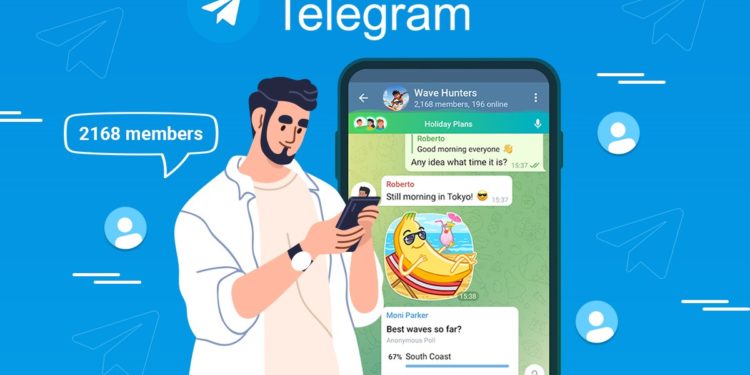Brands exploring magnetto.com for their Telegram marketing efforts often ask why engagement and conversions on this platform outperform traditional channels. The answer lies in psychology: how users choose to interact, how communities shape behavior, and how Telegram’s design nurtures trust, privacy, and immediacy.
Engagement on Telegram is fundamentally different from most social networks. Instead of algorithm-heavy feeds that dilute intent, Telegram relies on opt-in channels, groups, bots, and Mini Apps where users choose to receive updates and take actions in real time.
Messages arrive like direct communications, not distant broadcasts, which keeps attention focused and interactions purposeful. This opt-in architecture creates an environment where users expect relevance, utility, and speed – three conditions that naturally raise the odds of conversion.
The Psychology Behind Telegram’s High Engagement
At the core is the principle of self-selection. People subscribe to channels and join groups because the topic matters to them now, not because a feed surfaced it incidentally. That self-selection acts as pre-qualification, priming users to read, react, and click.
Telegram’s conversational format also triggers the reciprocity effect: when a channel consistently delivers value – quick tips, exclusive drops, timely alerts – subscribers feel comfortable giving something back, whether that’s attention, sign-ups, or purchases. Meanwhile, the immediacy of chat interfaces taps into the Zeigarnik effect; short, unfinished tasks inside bots and Mini Apps nudge users to complete the next step, sustaining momentum until the goal is reached.
Several design choices compound to improve conversion. Persistent, uncluttered threads reduce cognitive load, so people can process offers without competing stimuli. Native surfaces – bots and Mini Apps – compress the journey from discovery to action into a single session, removing page loads and context switching that often kill intent.
Rich messaging features such as pinned posts and inline prompts anchor calls to action exactly where attention peaks. Because communities are topic-dense, messaging can be highly specific, which increases perceived relevance and lowers resistance to the next click.
How Community Dynamics Influence Behavior
Community legitimacy is a powerful driver. Groups and channels are moderated by recognizable admins whose reputations compound over time. Social proof appears in organic forwards, active comment threads, and repeated interactions from known members. This creates a “trusted square” effect: when a recommendation appears in a space where participants feel seen and understood, they evaluate it more generously. Live conversations, AMAs, and quick polls add micro-commitments that keep people engaged between major actions, turning episodic interest into a habit loop.
Trust, Privacy, and Their Role in Conversions
Telegram’s brand is closely tied to privacy, and that matters psychologically. Users who feel in control of their data exhibit lower defensive posture when evaluating offers. Clear disclosures, straightforward permissions, and fast, secure authentication reduce friction and decision fatigue. When brands mirror these norms – transparent pricing, simple terms, honest claims – trust accelerates the path from intent to action. Positioning your offer inside a Telegram-native flow signals respect for user preferences and makes consent feel voluntary rather than coerced.
Why Telegram Outperforms Other Platforms in Engagement
On ad-saturated networks, the journey typically involves a jump to a slow mobile site or an app store, where attention fragments and attribution breaks. Telegram keeps the experience intact: the promise in the message matches the first screen of the bot or Mini App, and progress is visible with every tap. Because the funnel is compact and context is preserved, users reach value faster, and marketers get cleaner measurements of what actually works. This alignment – tight promise, immediate payoff, transparent telemetry – is why conversion rates often outpace traditional social channels.
Strategies to Leverage User Psychology for Higher Conversions
Design for one clear outcome per session and reveal value in under a minute. Use conversational cues to segment intent early, then route people to tailored paths so each step feels personally relevant. Anchor CTAs in moments of peak attention – after a concise explainer, a quick poll, or a timely alert – and keep the entire flow native to Telegram to avoid context loss. Reinforce trust with explicit benefits, moderated claims, and visible community norms such as pinned FAQs and public feedback.
Common Mistakes to Avoid in Engagement Tactics
Brands often overstuff messages, bury the value proposition, or send users off-platform too soon. Demanding excessive data before delivering any utility undermines trust, while generic CTAs ignore the intent signals that Telegram provides. Another frequent error is treating channels like broadcast billboards instead of interactive spaces; without timely replies, pinned clarifications, and iterative improvements, even good offers lose momentum.
As Telegram expands native capabilities – richer Mini App components, streamlined authentication, and integrated payments – more of the journey will happen in a single conversational loop. AI will personalize flows on the fly, recommending the next best action based on subtle intent signals while preserving privacy expectations.
Communities will evolve into programmable spaces where influencers and brands co-create interactive experiences that feel like products, not promotions. In this future, the psychology remains consistent: users reward clarity, control, and immediate value, and the brands that honor those principles will keep converting at the highest rates.











































































